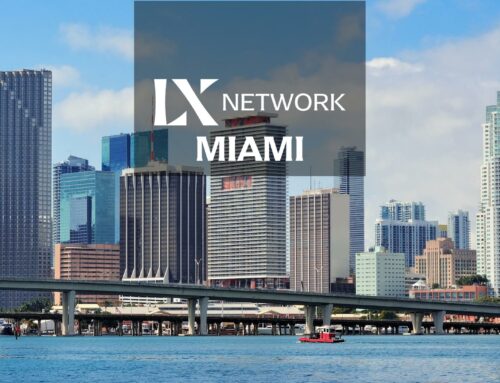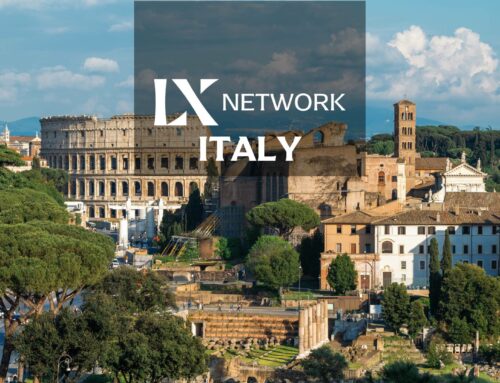Luxury Daily’s State of Luxury Real Estate 2021 eConference offered key learnings, insights, and a possible look into this year’s roadmap. The online event focused on the high-end residential market trends that impact brokers, agents, developers, investors, sellers and home-buyers.
As an exclusive Luxury Portfolio member in Costa Rica, LX participated in several of the eConference sessions throughout the day where we took notes to share. Here are some filtered notes, inspiration and context for today’s very dynamic global luxury real estate market…
9 Luxury Real Estate note highlights from the econference
- 2nd and 3rd homes are now becoming primary or co-primary residences.
- Virtual meetings affect the physical space. One of the biggest changes and considerations in work and home office design is the virtual meeting, which influences lighting, climate control, data security, and more.
- Enterprise home technology. Much of the highest end technology going into luxury homes are now enterprise level, whether that means security and privacy or greater capacity and integration.
- Sustainability influences design and is part of the mainstream conversation much more than it ever has. Much of the sustainability topic in design nowadays has to do with educating the client for a better project and better investment.
- Design and style considerations have evolved during pandemic. The open floor plan has become less advantageous for many as more spaces at home are being used and in new ways. Properly furnished areas, even when they’re not used regularly, add emotional warmth to the different areas of the home. So the sunset spot you use only once a week can make you feel better day-to-day just by seeing it.
- The global affluent market is really strong for purchases over the next 3 years. There’s variability in the regions, but overall it’s the #1 most in-demand investment category, and also the widest gap between buyers and a generally lower volume of sellers.
- COVID times have caused a stronger push away from city properties, but the luxury buyer values proximity and location which balances the push from urban to suburban. Vertical markets [buildings in urban areas] have struggled the most in the luxury market.
- Agents and luxury buyers need to break through the initial labels of a room and talk about the possibilities. It’s important to communicate the possibilities of the extra rooms and space in luxury homes for sale. Sit down in each of the rooms and areas so you properly understand the scale, proportion and emotional value of the space.
- There is a lot of opportunity. We should be on the lookout for negotiability.
Sections in this article:
Virtual Inspiration for interior design with Susanna Salk
Branded residences, the power address and luxury high-rise living
High-End Smart Homes: Powering the Luxury Residence of Tomorrow
Green Luxury: Incorporating Sustainability and Natural Building Products into High-End Design
State of Luxury Residential Real Estate: Buyers and Properties
Changing Design Preferences of HNWIs and UHNWIs Post-Pandemic
Virtual Inspiration for interior design with Susanna Salk
“Don’t stay in your own real estate lane. You need to share your own voice. You believe in the power of home, so share more of your taste and your ideas and other things you’ve seen to help others in their own search.”
Susan Salk
- Many 2nd and 3rd homes are now becoming primary homes.
- Sustainability influences design and is part of the mainstream conversation much more than it ever has.
- One of the biggest changes and considerations in work and office design is the virtual meeting.
- This means a lot of attention on lighting and what you need to work.
- Also, having multiple spaces for meetings, more areas in the home that can also work as a functional working area so you’re not at the same desk all day or sitting in an uncomfortable kitchen stool for 5 hours.
- For your own style insights for your home, tag a catalog or Pinterest or any collection with stickies or saves. Then analyze these choices to help you identify your own underlying preferences with visual reinforcement, looking for trends
Branded residences, the power address and luxury high-rise living
“I love branded residences. People have a level of expectation for design, quality, lifestyle that’s associated with the brand and that’s a valuable strategy for sales.”
Chuck Whitall, Unicorp National Developments
Diane Ramirez – Executive Chairman and Senior Advisor, Brown Harris Stevens Residential Sales
- High inventory is pushing prices down in the luxury market (NY,US). However, the market is very active and the highest end of the market has seen remarkable movement.
- The pandemic has given new meaning to home. We’re re-evaluating the spaces at home that have now become office, school, and new blends of functional space.
- Luxury home buyers want both urban and suburban lives.
- Human connection has become even more important during the pandemic. This applies to real estate which is a very personal service. Real estate has become an important emotional commodity.
- There is a lot of opportunity. We should be on the lookout for negotiability. I believe in real estate the worse is over.
- The smart buyer is looking beyond the short-term. Buyers are more conscious of where they’re home is located and having the options they need.
Christopher Schlank
- High-end residential developers are embracing the idea that people want more personal style. Buyers and property owners are looking for personal style beyond previous requirements.
- For real estate agents, it’s not about convincing, it’s about helping make the decision easier for buyers.
Chuck Whitall- President and CEO, Unicorp National Developments
- Florida has a shortage of high-end residential real estate inventory and a very active market.
- We have more people interested in the $6 million to $12 million than the $2 million and $3 million dollar condos.
- Most of our development sales the past 6 months have been virtual. We’re reconsidering the sales centers or at least evaluating how these work in a virtual dynamic with more parts of the sales process going virtual.
Amanda Altree – Global Leader, Residential Marketing, Marriott International
- There’s a big benefit of branded residences. In times of uncertainty, strong brands deliver confidence to potential buyers.
- Used to be that branded residences provided extras, but now it’s gone beyond to feed your passion, lifestyle, and better integrate all kinds of personal customization.
- Every room of the house is being scrutinized since it’s used for something.
- Much of the pipeline for Marriott Residences is international even when much of the current inventory is within the US.
Amanda Altree – Global Leader, Residential marketing, Marriott International
“We see a lot of people reconsidering their home structure. The luxury market trend is not just 2nd and 3rd homes, but co-primary residences.”
High-End Smart Homes: Powering the Luxury Residence of Tomorrow
“It’s one thing to integrate devices and technology, but high end homes fully automate their systems. For example, based on time of day or the type of activity that’s going on, whether working from home or playing outside or entertaining.”
Michelle Gus, Crestron
Mark van den Broek, CEO, SmartHouse Integration
- Clients are looking for complete integration solutions. Climate, music, outdoor and indoor, irrigation, device controls, and more.
- All the subsystems have to talk together and can operate. That’s key for high-end luxury homes.
- Personalizations to enhance substantial experiences. For example technology for lighting and controlling temperature for specific art pieces.
- It’s almost curating the technology just like you would the decor or artwork for a luxury home.
- Air purification and water purification is becoming much more efficient with new technology for control and measurement. For example, if you’re in a closed office on the phone a lot, you might get a reading of high CO2 which would then change the climate controls or perhaps ask to open a window.
- High-end tech systems for the home are built on intranets, so they get smarter and more useful with their internet connectivity but can operate fully without an internet connection.
Michelle Gus, Crestron
- Much of the highest end technology going into luxury homes are enterprise level, whether that means security and privacy or greater capacity and integration.
- Fully automated environments are different from DIY systems.
- It’s one thing to integrate devices and technology, but high end homes fully automate their systems. For example based on time of day or the type of activity that’s going on, whether relaxing at home or playing outside or entertaining.
Joe Barrett, president, Barrett’s Technology Solutions
- Lighting is the new frontier in technology integration.
- The health and wellness aspect of circadian rhythm dictates much of the design for a new luxury home.
- From a power standpoint, there are significant considerations regarding backups, battery, and mobility for home technology.
- Communication and remote management is a key driver for home-office technology.
- There are new security and comfort concerns that technology can address for the home office.
- One of the biggest topics in the industry is the bandwidth. With so much tech and technology, homes are straining their available resources at peak times with up to 18 different streaming devices (movies, laptop, music, sensors, etc). Luxury homes are connecting more and more with enterprise-level data networks.
- * The art of hidden technology really resonates with luxury home owners who want full functional integrations.
- Retrofitting is 40% of the luxury home technology business. For this segment the most important requirement is experience, and that’s where a good luxury real estate agent can make a difference with the right recommendations based on reputation.
What are clients looking for in high-end home-office tech?
- The office has moved into the home.
- We’ve seen more technology for voice commands to start a meeting or direct the rest of your home when you’re switching to work mode.
- Automation triggers at the home office are important to blend home and office use, whether it’s lowering the blinds for a meeting or changing the screens or settings in the office when switching activities.
Green Luxury: Incorporating Sustainability and Natural Building Products into High-End Design
“Thinking about Green luxury, the job of the architect, developer, and real estate agent is to make sure the topic of sustainability comes up.”
Douglas Burdge – Burdge Architects
Jennifer Hoppel, president, Burdge Architects
- Luxury doesn’t have to be at the expense of sustainability, and Sustainability does not have to be at the expense of design.
- There’s a more general awareness that there’s value in more sustainable design.
- Induction is coming into kitchens for luxury homes and professional kitchens. Gas was the traditional option but induction is now deemed a more sustainable alternative, moving towards electrification instead of gas.
Douglas Burdge, principal, Burdge Architects
- Much of the sustainability topic in design nowadays has to do with educating the client for a better project.
- The interaction has to be more efficient with a common base of what sustainable design can produce.
- The sustainable design process isn’t just for the client making the investment, but for the entire family. Sustainable design becomes an asset for generations.
Rebirth of the Bedroom Community In the Time of COVID-19
The suburbs of yesterday are experiencing an unexpected renaissance as the wealthy seek refuge from urban living. What is the impact of this flip on the real estate market and what does it mean for the larger economy?
Whitney LaCosta, broker/owner, Coach Realtors: The open floor plan or space in the social area is still alive, but luxury home buyers are looking for homes with more bedrooms or separated areas that can be functional on their own.
Elizabeth Nunan, president/CEO, Houlihan Lawrence Real Estate: The open floor plan is less advantageous as more spaces at home are being used.
John Turpin, president, Turpin Realtors: Large acreage is back in vogue. There’s less resistance to all the energy and resources that larger properties require. Pools seem to be back as a great at-home option.
State of Luxury Residential Real Estate: Buyers and Properties
Research and insights on developing trends and market indicators of the global real estate market and the outlook for 2021
Gregory Heym, executive vice president and chief economist, Terra Holdings
- Vertical markets [buildings in urban areas] have struggled the most in the luxury market.
- Luxury homes are now more and more competing globally, not just with your neighbor but also with other markets as there is more consideration to other settings.
- There’s a greater level of uncertainty which tends to slow the market. All this change adds pressure on local economics with greater shifts in government taxes and incentives.
- There are currently significant levels of discount for urban luxury properties. It’s a great investment opportunity and a great time to trade up.
Chandler Mount, CEO, Affluent Consumer Research Co.
- The global affluent market is really strong for purchases over the next 3 years. There’s variability in the regions, but overall it’s the #1 most in-demand investment category, and also the widest gap between buyers and a lower volume of sellers.
- The luxury buyer values proximity and location which balances the push from urban to suburban.
- There’s a stronger market in ultra-high luxury market in the $10million plus range. The feeling is the segment is growing and with more and more movement.
- A quarter of the luxury buyers are looking for investment properties to add to their portfolio.
- The instant shift to work from home has a significant effect. 50% of luxury home buyers want a second home to work from and 10% want to make the permanent shift to a home they will work from. This has also made dual structure properties much more attractive to the luxury buyer.
- One of the biggest challenges for independent brokerages is that technology and digital tools and online mechanisms are more and more important to tend to the luxury home buyer and to facilitate easier transactions.
Ivy Zelman, CEO, Zelman & Associates
- The older population tends to ‘age in place’, but COVID is pushing greater movement.
- Trends point to an acceleration in home upgrades for 49-59 yr old luxury home buyers
- The pandemic has brought life back to the suburban luxury markets, especially in the US.
- 2nd home luxury demand has surged, driven by low interest rates in the US.
- Inventory in the US overall is at an all-time low.
- In the US, suburban homeowners: 35% no mortgage, 66% have positive equity.
- 2021 will be a strong year with increase ~6% in home prices overall across the US. New construction will continue to accelerate.
- If you’re a real estate agent, you need to be talking to your ‘trading up’ clients about monthly payment more than absolute cost of the luxury property. It’s a great time for financing your luxury home.
- 30% of luxury home buyers are paying in cash. The affluent consumer is typically savvy enough and with access to sophisticated mechanisms to leverage their purchase. There’s a signficant refinancing boom using the mortgage instrument against their home equity.
Changing Design Preferences of HNWIs and UHNWIs Post-Pandemic
Evolving design preferences of affluent consumers amid the major and unexpected lifestyle shifts brought on by COVID-19
Peter Pennoyer, principal partner, Peter Pennoyer Architects:
- It’s important to communicate the possibilities of the extra rooms and space in luxury homes for sale.
- Brokers need to break through the initial labels of a room and talk about the possibilities.
- Sit down in each of the rooms and areas so you properly understand the scale, proportion and emotional value of the space.
- Properly furnished areas, even when they’re not used regularly, add emotional warmth to the different areas of the home. So the sunset spot you use only once a week can make you feel better day-to-day just by seeing it.
Janice Parker, principal, Janice Parker Landscape Architects
- Luxury home owners are now paying much more attention to their outdoor spaces, how they’re designed and how they’re used.
- Landscape design for luxury homes is becoming more functional, incorporating wellness and family activities with the outdoor space.
- As each part of the luxury property now contributes even more to family life, furnishing the outdoor spaces is key to make them more useful.








